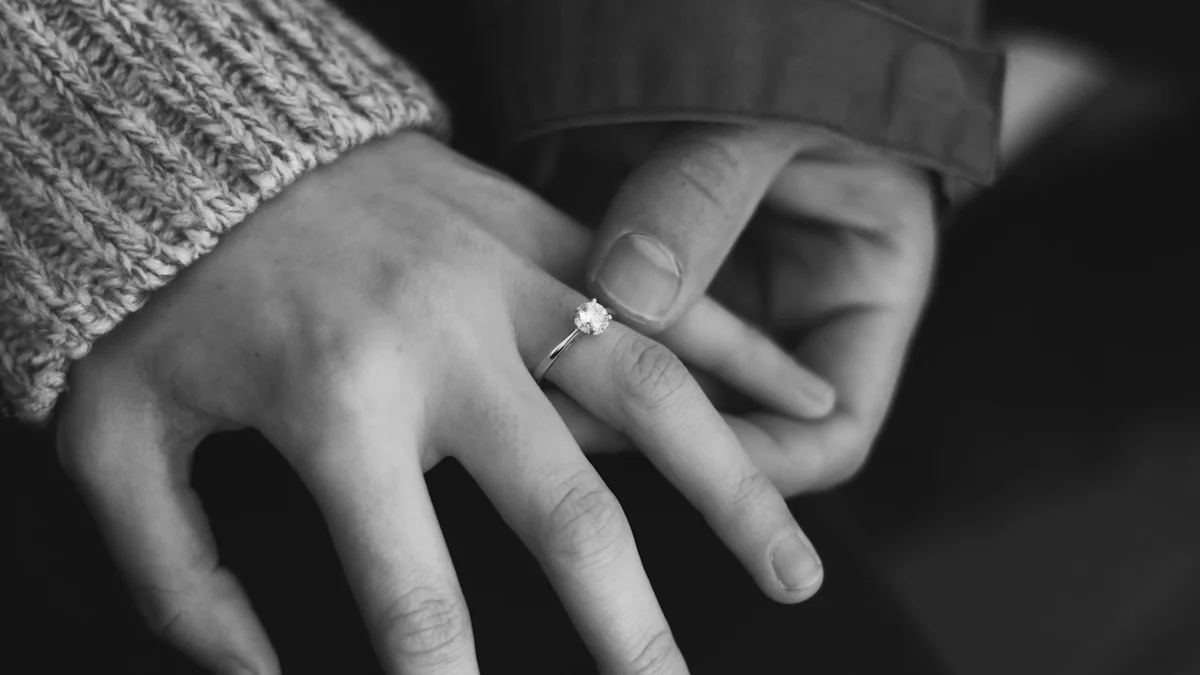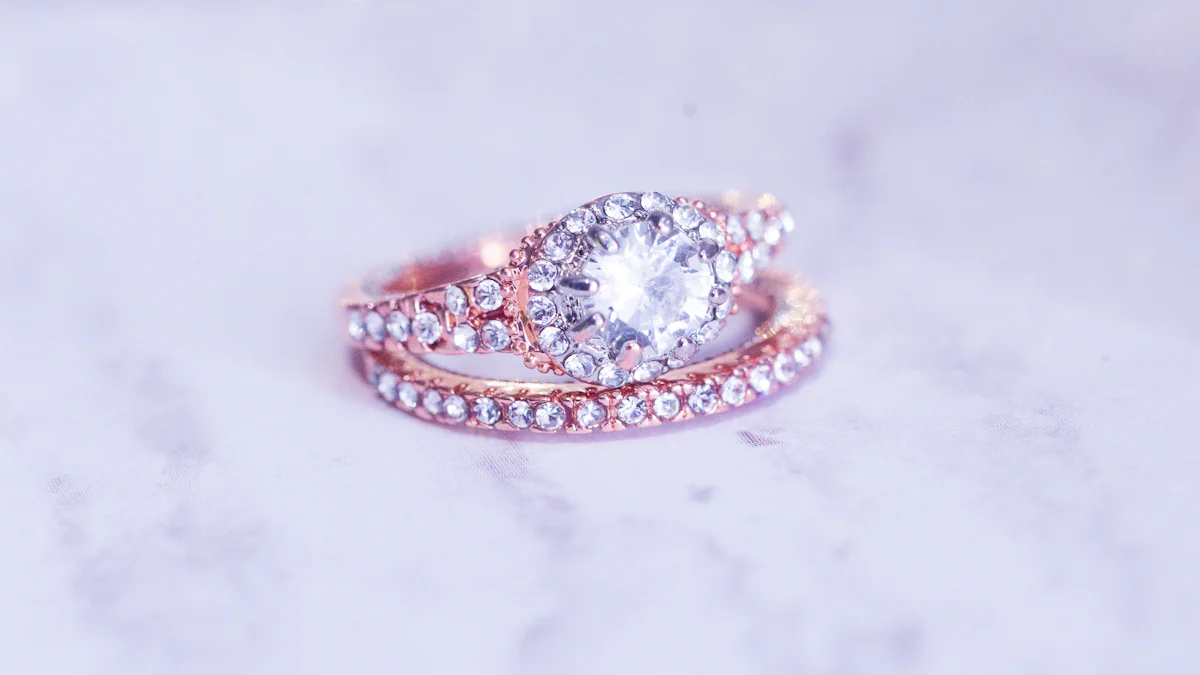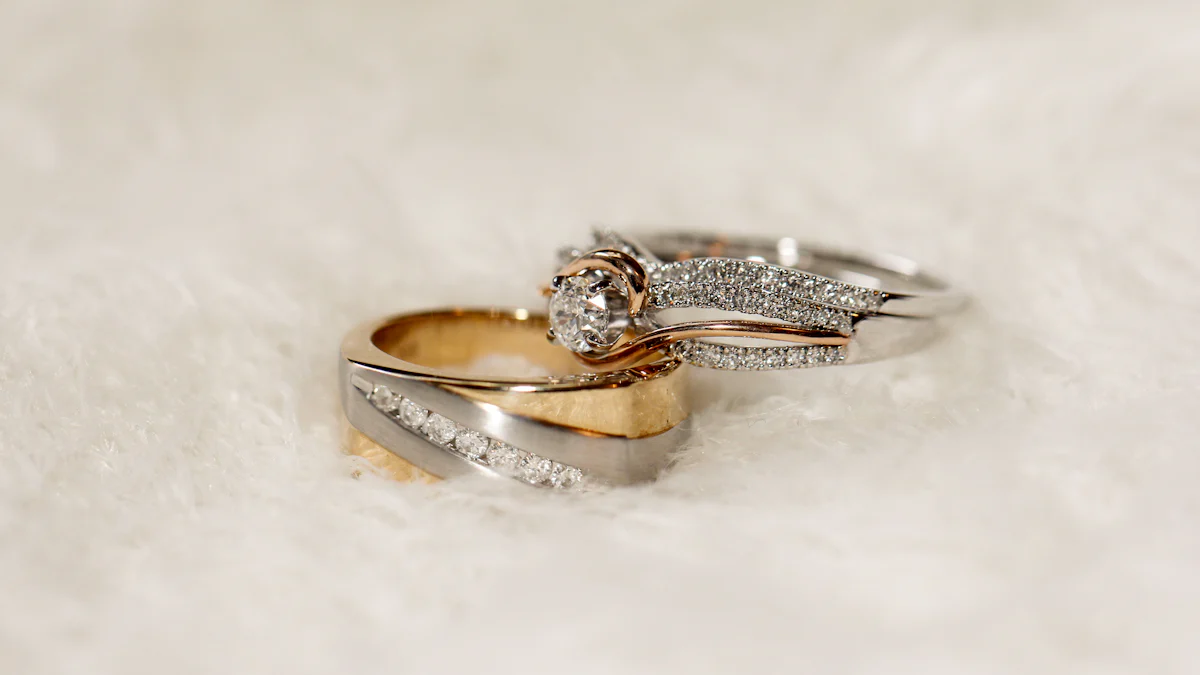What Affects 2.0 Carat Diamond Prices?

When you consider purchasing a 2.0 carat diamond, several factors come into play that affect its price. The 4Cs—carat weight, cut, color, and clarity—serve as the primary determinants. Carat weight significantly impacts cost, as larger diamonds are rarer and more valuable. Cut quality influences brilliance, while color and clarity affect appearance and desirability. Market dynamics, including demand and supply, also play a crucial role. Prices can range from $4,300 to $75,000, depending on these factors. So, how much is a 2.0 carat diamond? It varies widely based on these elements.
Key Takeaways
- Understand the 4Cs: Carat, Cut, Color, and Clarity are the primary factors that determine a diamond's price and quality.
- Carat weight significantly impacts cost; larger diamonds are rarer and can be worth exponentially more than smaller ones.
- Cut quality is crucial for brilliance; prioritize diamonds with excellent or very good cuts to maximize sparkle.
- Color grading affects value; aim for D to F grades for colorless diamonds, but consider G to J for a more budget-friendly option that still looks appealing.
- Clarity grades range from Flawless to Included; choose a clarity that balances visual appeal and cost, as many inclusions are not visible to the naked eye.
- Market dynamics, including demand for natural versus lab-grown diamonds, can influence prices; stay informed about trends to make better purchasing decisions.
- Certification from reputable labs like GIA adds value and assurance; always look for certified diamonds to ensure quality.
Carat Weight

Impact on Price
Carat weight plays a crucial role in determining the price of a diamond. As you consider purchasing a 2.0 carat diamond, you will notice that its price often increases exponentially compared to smaller diamonds. This happens because larger diamonds are rarer and more desirable. For instance, a 2.0 carat diamond can be worth up to four times more than a 1.0 carat diamond. The rarity of larger stones drives their value significantly higher. When you move from a 1.90 to 1.99 carat diamond to a full 2.0 carat, the price per carat jumps noticeably. This increase reflects the symbolic and market value associated with round numbers like 2.0 carats.
Comparison with Other Carat Weights
When comparing different carat weights, you will find that even slight differences can lead to substantial price variations. For example, a 0.99 carat diamond costs significantly less than a 1.00 carat diamond, despite the minimal size difference. Consumers often prefer the larger stone due to its symbolic value, even at a much higher price. Similarly, a 0.90-carat diamond sees a price increase compared to a 0.89-carat stone. This pattern continues as you move up the carat scale. A 1.0 carat diamond is exponentially more expensive than a 0.9-carat diamond. These price jumps highlight how carat weight affects diamond pricing, making it a key factor to consider when you shop for diamonds.
Cut
Importance of Cut Quality
When you evaluate a diamond, the cut quality stands out as a crucial factor. It directly influences the diamond's brilliance and overall appearance. A well-cut diamond reflects light beautifully, creating a dazzling sparkle that captures attention. Studies show that only diamonds with excellent or very good cuts optimize light return, making them shine the brightest. The cut quality impacts the diamond's value significantly, often leading to price variations of 5 to 15%. The Gemological Institute of America (GIA) grades cut quality based on factors like brightness, fire, scintillation, polish, and symmetry. These grades range from Excellent to Poor. A perfectly cut diamond holds higher value than a poorly-cut one, emphasizing the importance of cut in determining both beauty and price.
Popular Cut Styles
As you explore diamond options, you'll encounter various cut styles, each offering unique characteristics. The Round Brilliant cut remains the most popular due to its exceptional ability to reflect light. This cut maximizes brilliance and is often the preferred choice for engagement rings. Other popular styles include the Princess Cut, known for its modern square shape and sharp corners, and the Emerald Cut, which features a rectangular shape with step cuts that create a hall-of-mirrors effect. The Cushion Cut combines a square shape with rounded corners, offering a vintage appeal. Each cut style presents distinct aesthetics, allowing you to choose one that aligns with your personal taste and the desired appearance of your diamond.
Color
Color Grading Scale
When you evaluate a diamond, its color plays a significant role in determining its value. The Gemological Institute of America (GIA) uses a color grading scale from D to Z. D-grade diamonds are completely colorless and the most valuable. As you move down the scale, diamonds exhibit increasing tints of yellow or brown.
- D to F: These diamonds are colorless. They reflect light beautifully, making them highly sought after. Even gemologists find it challenging to distinguish between D and E grades without magnification.
- G to J: These diamonds are near-colorless. They offer a balance between appearance and cost. Most consumers find them appealing, especially when set in jewelry.
- K to Z: Diamonds in this range show noticeable color. They are less expensive but can still be attractive, depending on personal preference.
The rarity of colorless diamonds makes them more valuable. As a result, they command higher prices in the market.
Market Preferences for Color
In the diamond market, consumer preferences heavily influence pricing. Many buyers prefer diamonds that appear white and bright. This preference drives demand for higher-grade diamonds, such as those in the D to F range.
However, purchasing a near-colorless diamond, like a G or H grade, can be more cost-effective. These diamonds look almost identical to colorless ones to the untrained eye, especially when mounted in a ring.
"A diamond’s value is often affected by the rarity of one or more of the 4Cs. Colorless diamonds are scarce—most diamonds have tints of yellow or brown."
Understanding these preferences helps you make informed decisions. You can choose a diamond that fits your budget while still meeting your aesthetic desires.
Clarity
Clarity Grading System
When you examine a diamond, clarity becomes a key factor in its evaluation. The Gemological Institute of America (GIA) uses a clarity grading system that ranges from Flawless (FL) to Included (I). This system assesses the visual purity of a diamond by examining inclusions and blemishes. Inclusions are internal imperfections, while blemishes appear on the surface. Most of these imperfections remain invisible to the naked eye and require 10x magnification for detection.
- Flawless (FL): No inclusions or blemishes visible under 10x magnification.
- Internally Flawless (IF): No inclusions, only minor blemishes visible under 10x magnification.
- Very Very Slightly Included (VVS1 and VVS2): Minute inclusions that are difficult to see even under 10x magnification.
- Very Slightly Included (VS1 and VS2): Minor inclusions visible with effort under 10x magnification.
- Slightly Included (SI1 and SI2): Noticeable inclusions under 10x magnification.
- Included (I1, I2, and I3): Obvious inclusions that may affect transparency and brilliance.
Understanding this grading system helps you appreciate how clarity impacts a diamond's beauty and value. Higher clarity grades, like Flawless or Internally Flawless, command premium prices due to their rarity and visual appeal.
Balancing Clarity and Cost
As you consider purchasing a diamond, balancing clarity and cost becomes essential. While higher clarity grades enhance a diamond's value, they also significantly increase its price. For instance, a 2.0 carat diamond with a clarity grade of Internally Flawless (IF) or Very Very Slightly Included (VVS2) can be much more expensive than one with a Slightly Included (SI1) or Slightly Included (SI2) grade.
Most 2.0 carat diamonds have minor inclusions visible only under magnification. These inclusions do not usually affect the diamond's overall appearance. Opting for a clarity grade like SI1 or SI2 can offer a balance between visual appeal and affordability. These grades provide good value, as the inclusions are often not noticeable to the naked eye.
"The clarity grade of a diamond significantly affects its price. Higher clarity is important for specific cuts like step-cuts to showcase the diamond's clarity."
By understanding the clarity grading system and considering your budget, you can make informed decisions. You can choose a diamond that meets your aesthetic preferences without overspending.
Market Factors
Demand and Supply
In the diamond market, demand and supply dynamics significantly influence prices. You might notice that global consumer demand for natural diamond jewelry remains strong, with a steady value of USD 87.5 billion in 2022. This stable demand supports the price levels of natural diamonds. Additionally, the demand for polished diamonds also held firm at USD 27.8 billion during the same period.
In regions like China, millennials are investing in diamond jewelry, spending an average of RMB 10,300 per piece in 2022. This trend indicates a robust market interest, which can drive prices upward. However, the introduction of lab-grown diamonds is reshaping the market landscape. Since 2016, the retail price of lab-grown gem-quality diamonds has nearly halved, making them an attractive alternative for many consumers. This shift could potentially affect the pricing of natural diamonds as more people opt for the more affordable lab-grown options.
Certification and Branding
When you purchase a diamond, certification and branding play crucial roles in determining its value. A certified diamond comes with a grading report from a reputable gemological laboratory, such as the Gemological Institute of America (GIA) or the American Gem Society (AGS). These certifications provide assurance about the diamond's quality, including its cut, color, clarity, and carat weight. A certified diamond often commands a higher price due to this verified quality.
Branding also impacts diamond prices. Well-known brands often charge a premium for their diamonds, leveraging their reputation for quality and craftsmanship. When you buy from a renowned brand, you pay not only for the diamond itself but also for the brand's prestige and the assurance of quality it provides. This branding effect can lead to significant price differences between similar diamonds from different sellers.
"A diamond's certification and the brand's reputation can greatly influence its market value, offering buyers confidence in their purchase."
Understanding these market factors helps you make informed decisions when buying a diamond. By considering demand trends, certification, and branding, you can better navigate the complexities of diamond pricing and find a diamond that meets your needs and budget.
How Much is a 2.0 Carat Diamond?

Price Range
When you explore the market for a 2.0 carat diamond, you'll find that prices can vary significantly. The cost of a 2.0 carat diamond typically ranges from $6,500 to $55,000. However, depending on factors like cut, color, clarity, and shape, prices can extend from as low as $2,000 to as high as $90,000. This wide range reflects the diverse qualities and characteristics that diamonds can possess. For instance, a diamond with the highest color grade might cost between $2,283 and $5,767, while a diamond with superior cut and clarity could command a much higher price. Understanding these price variations helps you gauge how much a 2.0 carat diamond might cost based on your preferences and budget.
Factors Influencing Price Variability
Several factors influence the price variability of a 2.0 carat diamond. First, the cut quality plays a crucial role. A well-cut diamond maximizes light reflection, enhancing its brilliance and value. Second, the color grade affects pricing. Diamonds closer to the colorless end of the scale (D to F) are more valuable. Third, clarity impacts cost. Diamonds with fewer inclusions and blemishes are rarer and more expensive. Lastly, the shape of the diamond can also affect its price. Round diamonds often cost more due to their popularity and the precision required in cutting them.
Market dynamics, such as demand and supply, further influence diamond prices. High demand for natural diamonds keeps prices stable, while the growing popularity of lab-grown diamonds offers more affordable alternatives. Certification and branding also play a part. Certified diamonds from reputable labs like the GIA often fetch higher prices, and well-known brands may charge a premium for their reputation and craftsmanship.
By considering these factors, you can better understand how much a 2.0 carat diamond might cost and make informed decisions when purchasing one.
Understanding what affects 2.0 carat diamond prices helps you make informed decisions. Key factors include carat weight, cut, color, clarity, and market dynamics. Each element plays a crucial role in determining how much is a 2.0 carat diamond. To balance quality and cost, focus on the 4Cs. Prioritize the aspects that matter most to you. For instance, opt for a slightly lower clarity grade if it means getting a better cut. This approach ensures you get the best value without overpaying for unnecessary qualities.
FAQ
What are the 4Cs of diamonds?
The 4Cs stand for Carat, Cut, Color, and Clarity. These factors determine a diamond's quality and price. Carat refers to the weight, Cut affects the sparkle, Color indicates the hue, and Clarity measures imperfections.
How does carat weight affect diamond prices?
Carat weight significantly impacts diamond prices. Larger diamonds are rarer and more valuable. A 2.0 carat diamond can cost much more than a smaller one due to its size and rarity.
Why is cut quality important?
Cut quality influences a diamond's brilliance. A well-cut diamond reflects light beautifully, enhancing its sparkle. The Gemological Institute of America (GIA) grades cut quality from Excellent to Poor.
How does color grading work?
The GIA uses a scale from D to Z to grade diamond color. D-grade diamonds are colorless and most valuable. As you move down the scale, diamonds show more color, affecting their price.
What should I know about diamond clarity?
Clarity refers to the presence of inclusions and blemishes. The GIA grades clarity from Flawless (FL) to Included (I). Higher clarity grades mean fewer imperfections and higher value.
How do market factors influence diamond prices?
Market factors like demand and supply affect diamond prices. High demand for natural diamonds keeps prices stable. The rise of lab-grown diamonds offers more affordable options.
Why is diamond certification important?
Certification provides assurance of a diamond's quality. Reputable labs like the GIA issue grading reports that detail a diamond's 4Cs. Certified diamonds often command higher prices.
How can I balance quality and cost when buying a diamond?
Focus on the 4Cs to balance quality and cost. Prioritize the aspects that matter most to you. For example, choose a slightly lower clarity grade if it means getting a better cut.
What should I do if I'm unsure about evaluating a diamond?
If you're unsure how to evaluate a diamond, seek expert assistance. Contact a professional to help you find an exceptional diamond within your budget. They can guide you through the process.
"We’re here to help with anything you need in your search for the perfect diamond."
See Also
Exploring the Cost of a 2 Carat Lab Diamond
Essential Elements That Influence Diamond Ring Costs
Comparative Analysis of All Around Diamond Ring Prices

